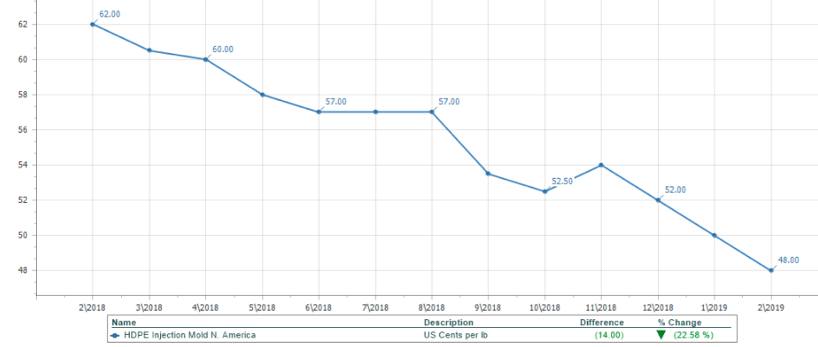Are you following the Golden Rule?

Making suppliers’ costs transparent gives them incentive to think long-term. It aligns procurement’s interests with the suppliers’ interests.
In ProPurchaser’s Four Cornerstones for Leveraging Cost Transparency, the first cornerstone is The Golden Rule of Negotiations:
Never enter a negotiation without first researching what has happened to your supplier’s costs.
The golden rule will help procurement do two things:
- Identify opportunities to negotiate lower prices, and
- Help prevent price creep.
Two interesting phenomena related to The Golden Rule and lowering prices are discussed below: ‘hockey sticks’ and ‘silent slopes’.
Hockey Sticks
Let’s say procurement gets a call from a supplier who’s looking to increase pallet prices by 11% because they have had to accept a 22% cost increase for wood. The question is: over what time period have the costs changed? Chances are, the supplier is choosing the window of time that best supports his case.

What’s the first thing procurement should do in this situation? Remember the golden rule: research what has been happening with the supplier’s costs. The graph above confirms that wood costs are up 22%, but only versus last year. When the time frame is increased to four years, wood prices are only up about 3%.
The further back in time the data goes, the more perspective procurement gains on how supportable current prices are when compared to the supplier’s current costs. The cost data becomes the beginning of a conversation that ends in the right place (a 1.5% increase not 11%).
Making suppliers’ costs transparent gives procurement negotiating leverage. While you may not always get everything the data says you should, you will always be better off. You are certainly not going to pay what the supplier is asking for and, most importantly, you send a clear message to suppliers: “We are watching your costs now. You need to play fair. No more easy money here!”
Silent Slopes
The image below shows a silent slope. There is silence because suppliers (understandably) don’t call to say polyethylene prices are down. If procurement doesn’t make a move, nothing will change. There is clearly an opportunity to negotiate a price reduction for plastic products. Waiting for suppliers to tell you their costs are down means you will probably wait a very long time.

A supplier will start making calls when his costs go up, but the responsibility for taking advantage of price reductions clearly falls to procurement. Once it is made transparent that his costs have fallen, your supplier has little choice but to lower his price. It gives procurement very powerful leverage.
Price creep
Transparency also prevents price creep. Price creep is systemic: it’s baked into the way business is done because everyone always tries to improve their margins. However, once suppliers realize their costs are transparent and that procurement is watching, price creep disappears. Suppliers want to preserve their reputation at all costs. They want to avoid creating a negative image. Not agreeing to a decrease will paint them as greedy and hypocritical because, in the past, they justified raising prices based on higher input costs. If higher input costs justify high prices, then lower input costs justify lower ones.
With transparency, suppliers will only pursue justifiable increases when their costs are legitimately higher.
Cost Transparency is also a way to encourage suppliers to reduce prices without using competition. Without transparency, the only practical way to lower prices is to apply competitive pressure by going to market for bids. Going through a bidding process every time there is a change in the marketplace, is a huge amount of work and not practical for most organizations
It is up to procurement professionals to create transparency by researching supplier costs. Following the Golden Rule should be your go-to best practice when negotiating with suppliers.
If you’re interested in judging for yourself if cost transparency really works, join thousands of other procurement professionals and take out a free trial to ProPurchaser (no credit card required).

Questions?
Let us know how we can help.
Ready to become a trial member?
No credit card required.
ProPurchaser © 2025
